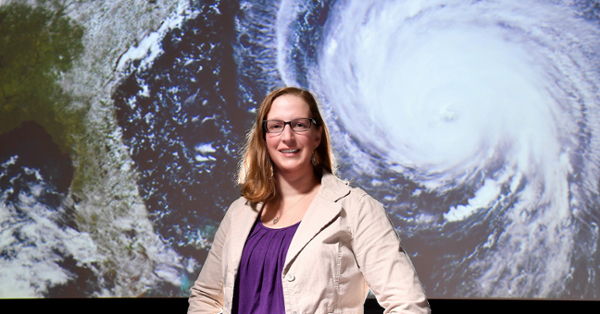Rowan prof’s sea level expertise adds to concern about potentially severe West Coast earthquake
Rowan prof’s sea level expertise adds to concern about potentially severe West Coast earthquake

Scientists believe a major earthquake will eventually rupture the Cascadia subduction zone, a fault that runs from Vancouver Island in Canada to northern California, and predictions for that rupture are severe.
A new report, including contributions from Rowan University climate scientist Andra Garner, Ph.D., suggests that a collapse, or subsidence, of ground along the fault, combined with climate-driven sea level rise, will result in serious, if not catastrophic, flooding.
Garner, an associate professor of Environmental Science in the School of Earth & Environment, is an expert on sea level rise affected by climate change who produced calculations for the study, “Increased flood exposure in the Pacific Northwest following earthquake-driven subsidence and sea-level rise,” which ran April 28 in the journal PNAS (Proceedings of the National Academy of Sciences).
The report found that a rupture along the Cascadia subduction zone could produce a subsidence of anywhere from one half to two meters, meaning the earth around it could suddenly drop more than six feet.
The fault, which scientists believe ruptures every 200 to 800 years, caused its last major earthquake in 1700, a temblor so severe that it produced a tsunami that struck both the West Coast and Japan.
According to the study, “by 2100, earthquake subsidence amplified by projected climate-driven sea-level rise could more than triple the flood exposure of residents, structures and roads. This study underscores the need to consider combined earthquake and climate impacts in planning for coastal resilience at the Cascadia subduction zone and globally.”
“We estimate that there’s about a 15 percent chance of a major quake within the next 50 years, and that goes up the longer we go without an earthquake happening. So, we expect it will happen, but we don’t have a good way to predict when,” Garner said.
Scientists believe the 1700 quake was of a magnitude eight or greater, and a future temblor along the fault is expected to be significant as well.
The report found that, in addition to whatever damage the earthquake and a potential tsunami might inflict, ocean inundation could be severe.
“It’s the kind of flooding that would really disrupt infrastructure and livelihoods,” Garner said. “We’re concerned about critical infrastructure like schools, hospitals and airports.”
While the study did not consider the number of potential lives lost, Garner said it could be high. Severe flooding intensified by sea level rise would amplify damage and risks initially posed by a massive earthquake.
She said the region’s population is especially vulnerable to a major quake because so many people live along the coast.
Ultimately, she said, the study serves not just as a warning about a future earthquake along the Cascadia zone but as a guide to government and agency planners.
“Our results emphasize a need to consider both the subsidence that can occur as well as the sea levels that we know are changing due to our warming planet,” Garner said. “What this study shows is the subsidence that could occur, but which would not go away after the quake like the shaking would.”
She said it also shows why it might be prudent to avoid building critical infrastructure in a potential impact zone.
“Our perspective of time is pretty limited,” Garner said. “1700 feels fairly distant and the land today is what feels normal. But we know there is a chance, and it’s almost inevitable at some point, that (a major earthquake in that region) would take us away from the normal that we’re used to.”